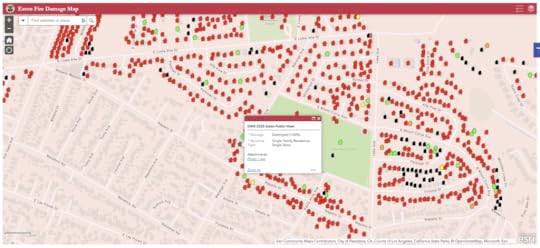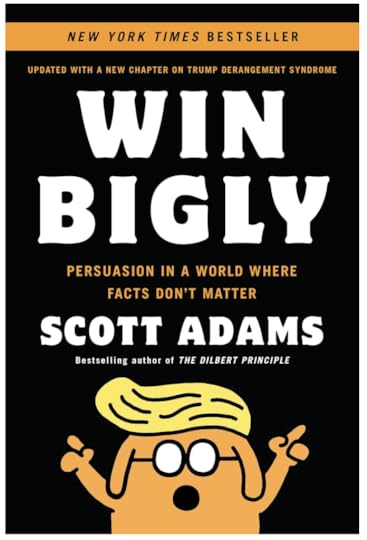How Facts Matter
Nineteenth in the News Commons series.
Facts don’t matter, or they matter much less than people think—Daniel Kahnemann
Facts don’t matter. What matters is how much we hate the person talking—Scott Adams
But facts do matter when life and death are on the line. Or when one is recovering from a life-changing situation. To help make the case for that, here are two collections of facts about the #LAfires:
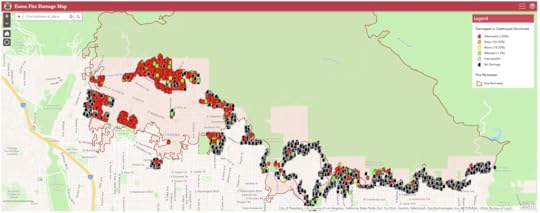 A useful visualization of the CAL FIRE Damage Inspection (DINS) database for the Eaton Fire.
A useful visualization of the CAL FIRE Damage Inspection (DINS) database for the Eaton Fire.
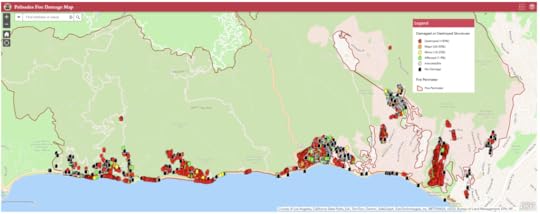 A useful visualization of the CAL FIRE Damage Inspection (DINS) database for the Palisades fire.
A useful visualization of the CAL FIRE Damage Inspection (DINS) database for the Palisades fire.These are being updated on an ASAP basis by CAL FIRE (the The Department of Forestry and Fire Protection) as they inspect damage across the those two fires’ burned neighborhoods.
Here is a close-up of one section of the Eaton Fire map, with one moused-over pop-out:
The photo link in the pop-out goes here:
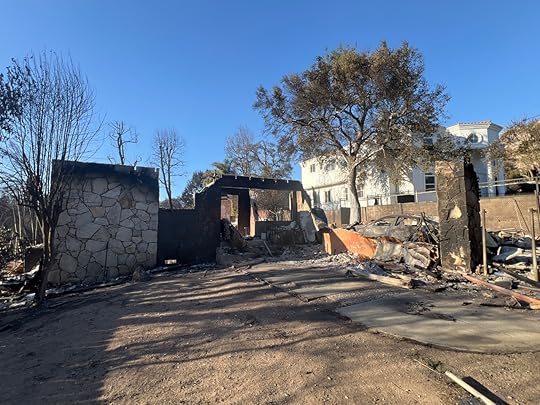
The house next door appears undamaged. That’s the green one on the map. By looking at Google Maps, I can see those houses are 3305 and 3310 North Marengo Avenue in Altadena. Note that the map has a search field in the top left corner. When one looks for an address (such as the first of those two), a pop-out appears with this:

“Show more results” and “Zoom to” lead to additional information. Would it help to have a list of all the affected structures, their addresses and conditions? Sure. Exactly seven years ago, after a massive debris flow destroyed much of Montecito, California (one zip code away from our house in Santa Barbara), I posted a list like that in this blog post. My source map was this one (now at the Santa Barbara County Fire Department):
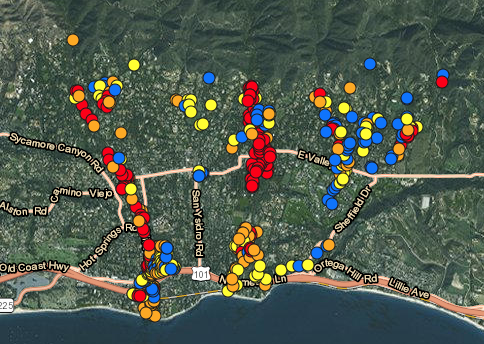
Mousing over those dots popped up an address for each one, and I used those to hand-produce a master list with the addresses for all the structures that had been lost or damaged. The idea was to have a Web page where people could quickly see what may have happened to their house—or the house of somebody they knew, using a simple text search of a Web page. Maybe somebody will do the same thing here.
I bring this up in obedience to my mother’s prime command to my sister and me when we were kids: Make yourself useful.
And that’s what I hope I’m also doing with this post. It’s not just by sharing some maps. It’s about pulling facts away from stories, which I wrote about in my last post. There I said stories are the base format of human interest, and the main product of journalism—and that they have just three requirements: character, problem, and movement.
Stories serve many purposes, of course. One is persuasion. For more on that, check out Win Bigly: Persuasion in a World Where Facts Don’t Matter, by Scott Adams, of Dilbert fame:
The world where facts don’t matter is the digital one we live in now, alongside the physical one where all those homes were lost. In the digital world, the three requirements of stories can be used against journalism as well as by it. Toward both of those uses, I wrote Where Journalism Fails during the first Trump administration, and some of it bears repeating:
We have never seen Donald Trump’s like before, and may never again. His genius at working all three elements is without equal in our time—or perhaps any time. So please, if you can, set your politics aside and just look at the dude through the prism of Story.
Donald Trump spins up stories at least four ways:
Through constant characterization of others, for example with (“Little Mario,” “Low Energy Jeb,” “Crooked Hillary,” “Sleepy Joe,” “Failing New York Times”)By finding or creating problems, and characterizing those too: “witch hunt,” “fake news,” “illegal ballots,” “Dominion-izing the Vote.”By creating movement via the Roy Cohn and Roger Stone playbook: always attack and counter-attack, sue constantly, and claim victory no matter what. (Roy Cohn was a lawyer Frank Rich felicitously called “The worst human being who ever lived … the most evil, twisted, vicious bastard ever to snort coke at Studio 54.” Talk about character: Cohn was absolutely interesting. As Politico puts it here, “Cohn imparted an M.O. that’s been on searing display throughout Trump’s ascent, his divisive, captivating campaign, and his fraught, unprecedented presidency. Deflect and distract, never give in, never admit fault, lie and attack, lie and attack, publicity no matter what, win no matter what, all underpinned by a deep, prove-me-wrong belief in the power of chaos and fear.”)By playing the ultimate alpha. That’s why he constantly calls himself the winner, and “loser” is one of his favorite epithets.By de-legitimizing facts, truths, norms, and those who traffic in them. Key to this is accusing others of wrongs he commits himself. This is why he labels CNN and other news organizations “fake news” while raising falsity to an art form. Often, his accusations against others are a reliable tell of his guilt for doing the same thing.As for movement, every new problem Trump creates or intensifies is meant to generate an emotional response, which is movement in itself.Look closely: Trump’s news is deliberate, theatrical, and constant. All of it is staged and re-staged, so every unavoidably interesting thing he says or does pushes the last thing he said or did off the stage and into irrelevance, because whatever he’s saying or doing now demands full attention, no matter what he said or did yesterday.
There is genius to this, and it requires understanding and respect—especially by those who report on it.
You can call this trolling, or earned media coverage, meaning the free kind. Both are true. Comparing Trump to The Mule in Isaac Asimov’s Foundation and Empire also makes sense. (The Mule was a mutant with exceptional influence over the emotions of whole populations. It was by noting this resemblance that I, along with Scott Adams, expected Trump to win in 2016.)
This speaks of two big fails for journalism:
Its appetite for stories proves a weakness when it’s fed by a genius at hogging the stage.It avoids reporting what doesn’t fit the story format. This includes most of reality.My favorite priest says “Some truths are so deep only stories can tell them,” and I’m sure this is true. But stories by themselves are also inadequate ways to present essential facts people need to know because they exclude what doesn’t fit “the narrative,” which is the modern way to talk about story—and to spin journalists. (My hairs of suspicion stand on end every time I hear the word “narrative.”)
So here’s the paradox: We need to know more than stories can tell, yet stories are pretty much all people are interested in. Character, problem, and movement give shape and purpose to every human life. We can’t correct for it.
That’s why my topic here—a deep and abiding flaw (also a feature) of both journalism and human nature—is one most journalists won’t touch. The flawed nature of The Story itself is not a story. Same goes for “earned media coverage.” Both are features rather than bugs because they cause much of journalism’s success and debugging them has proven impossible.
Ah, but we can debug the context of journalism, which is the world of facts—especially facts in the physical world. That’s why I’m sharing these CAL FIRE maps. Besides bein extremely useful, they highlight how much more needs to be compiled and put in useful forms, so the stories journalism tells can be as fact-based as possible. In my next post, I’ll talk about a new form that can maximize the usefulness of facts.
Bonus links:
2 Bay Area climate tech startups seek to help first responders in LA County wildfire fight features is a good story on its own, and features old friend Jackson Yip and the work his new company is doing. (NBC Bay Area)Home Losses From the LA Fires Hasten ‘An Uninsurable Future’ (Time)
Doc Searls's Blog
- Doc Searls's profile
- 11 followers


